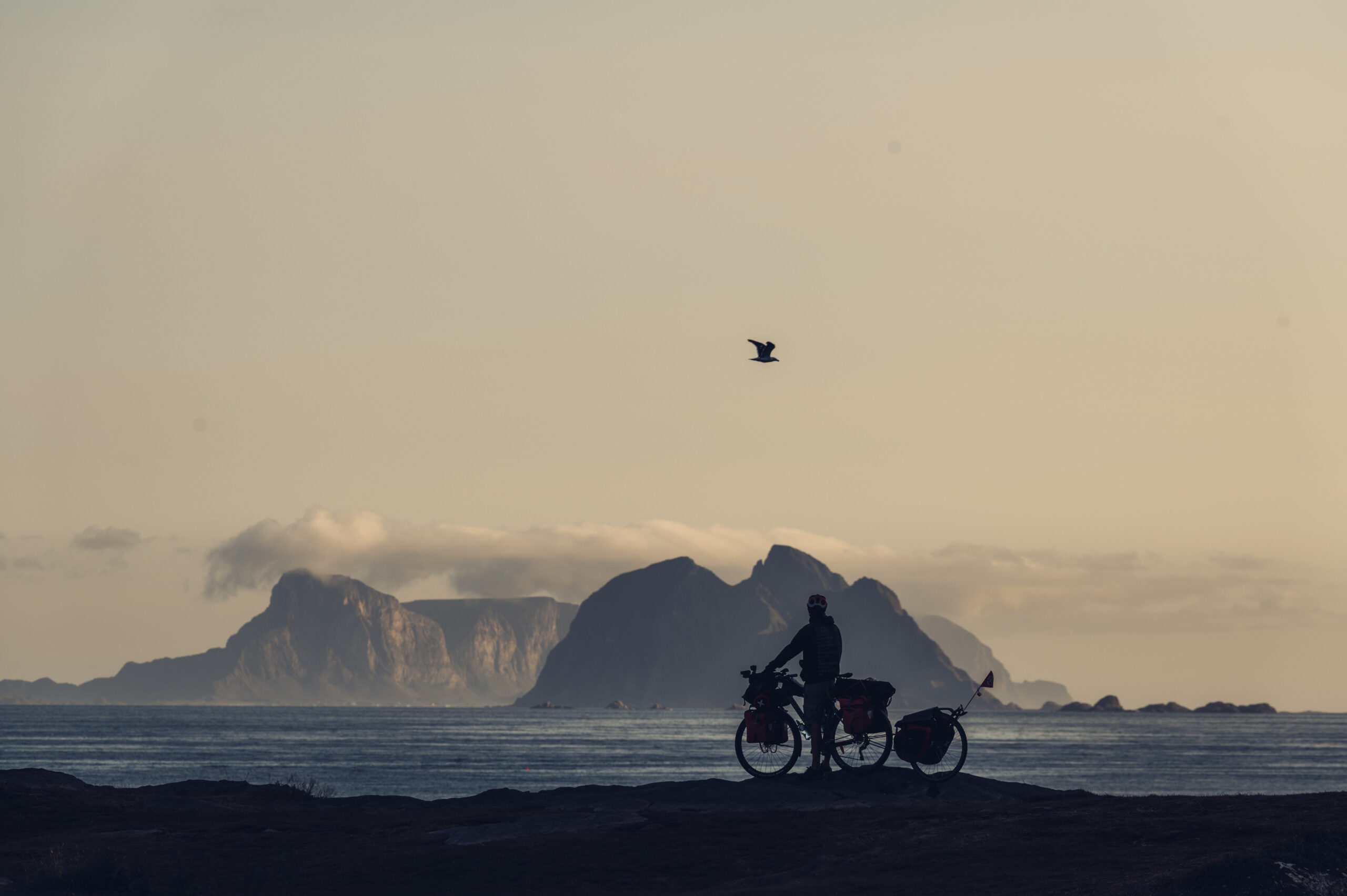Cycling to Nordkapp
Route and Duration
Cycling to Nordkapp, the northernmost cape in Europe, lies several hundred kilometers beyond the Arctic Circle, where the Norwegian winds, rocky terrain, and ubiquitous reindeer dominate the landscape. So far, my journey to Nordkapp by bicycle has been the adventure of a lifetime, spanning 152 days from May 8th to October 6th, 2023. During this time, I covered a distance of 10,420 kilometers, passing through 7 countries and visiting 5 capital cities.
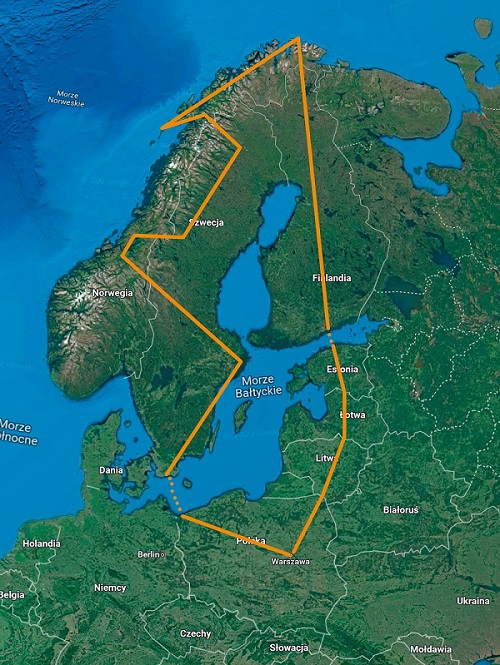
The idea for a bicycle expedition Cycling to Nordkapp and the genesis of this venture originated from a combination of factors and personal interests.
I had been drawn to the idea of bicycle touring with bike panniers for quite some time. I watched with envy as a classmate embarked on a journey from Warsaw to Greece with a friend. However, it was only a few years later, in 2017, after facing some health issues, that I started my own solo bicycle journeys within Poland.
Around the same time, I started watching YouTube videos of people traveling the world on a budget by bicycle, and I stumbled upon a motorcycle trip to Nordkapp. The topic resonated with me due to my deep connection with nature. Concurrently, at my workplace, my manager, who was quite the wanderer himself and had traveled extensively across Europe, spoke about Scandinavia. So, the wanderlust seed had been planted many years prior.
It was only a matter of time before I decided to head in that direction. Less than a year after my initial solo journey, I began planning my bicycle expedition to Nordkapp. I was well aware of the indulgent smiles and skeptical reactions from people upon hearing about my idea. After all, cycling to the North Pole sounded like a freezing adventure where wolves and bears would devour me, and penguins would finish the job. Of course, it’s important to note that the North Pole is not the same as the Arctic Circle, which includes a significant area within Europe, especially the northern cape. Additionally, the few wolves and bears are found near the Russian border, and unfortunately, there are no penguins in the region.
So, the inspiration for this extraordinary journey was a combination of a fascination with bicycle travel, exposure to the beauty of nature, and the allure of remote destinations, all blended into a captivating desire to explore the northern reaches of Europe.
Overview of the Journey and Duration
I began my journey by first examining the route on maps and estimating the time it would take. Many people traveled from Poland to Nordkapp in just over a month, opting for the ferry route from Świnoujście to Sweden or Helsinki to Tallinn. An alternative was the route through Germany to Norway and through Russia. However, I dismissed this scenario, opting for the two ferries on the route.
So, the bicycle route to Cycling to Nordkapp was expected to take about 3 months, assuming I followed a relatively straightforward path with two ferry crossings and an average daily distance of 80 kilometers.
As I traced my finger on the map, I extended the route by additional weeks until the plan settled on 4 months of travel. Simultaneously, drawing from my own experience, I knew that my actual travel time for a longer journey could extend by a third, so I reserved five months for the expedition, which later proved to be the right decision.
Relying solely on the travel plan I had meticulously documented in a table, day by day with the number of kilometers, I had initially intended to return home in late August or early September. In reality, I left Nordkapp on August 21st and didn’t reach home until early October, concluding that leg of the journey in 51 days.
Throughout the entire route, there were many places and situations that detained me longer than planned:
- I delayed the ferry to Sweden by 2 days.
- In Hamar (100 kilometers north of Oslo), I spent a weekend with fellow countrymen and, after discussions about the area, changed my route to a much longer loop, extending the travel time on this stage by several days.
- At Geiranger Fjord, I spent 4 days.
- In the Lofoten Islands, I extended my stay by 2-3 days.
- At Stendalsbreen Glacier, 1 day.
- Nordkapp, where I spent 5 days.
Statistically, I covered an average of 73 kilometers per day, not counting rest days. There were stages where I covered significantly more or fewer kilometers in a day. For example:
- Southern Norway – 54 kilometers per day.
- Finland – 79 kilometers per day.
This variation was due, on one hand, to the terrain and the climbs, and on the other hand, to the landscape itself. In Norway, every turn offered breathtaking views, while in Finland, which has a much gentler terrain, there were primarily forests and fewer typically photographic spots, though no less beautiful in their own way.
How I Planned the Route
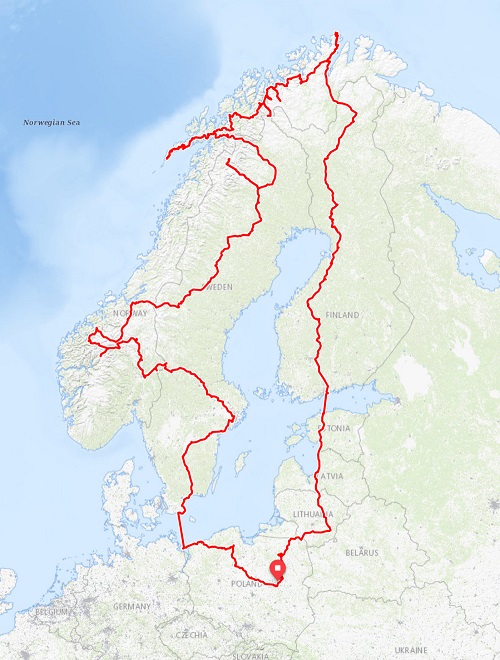
I planned my route before the trip during my free time at home using Google Maps and Mapy.cz. However, Google Maps has limitations because it may not indicate suitable winter routes for bicycles due to some roads being closed in the winter.
An important resource for planning was https://www.sykkelveg.no/latest, where Norwegian tunnels and marked bicycle routes are displayed. I’m not sure about the update frequency of this map, but I didn’t encounter significant issues with it during my journey. You can also check street view to see if there are any restrictions before entering a tunnel.
During my bicycle journey to Nordkapp, my intention was to connect with nature, so I generally avoided larger cities and opted for exploring areas outside urban agglomerations. I often checked street view for picturesque spots, both before and during the trip, using my phone while on the road. Once in Scandinavia, in addition to the planned route, I would also check when the next store would be, as if you plan your route “well,” you might not encounter a store for up to 300 kilometers. Typically, the longest stretches without stores were up to two days of travel.
Packing for Nordkapp
One of the initial challenges I had to tackle was how to pack for a multi-month adventure. My style of travel requires a significant amount of gear, and this load was further increased by my passion for filmmaking and photography (approximately 10 kg). I had no intention of embarking on the journey without this equipment, as I aimed to extract the best possible content from this trip.
Assuming I would depart in May and travel for four months, I looked back at historical weather data and noticed a slight risk of short-term weather disruptions beyond the Arctic Circle, including the possibility of temperatures dropping to -5°C in the worst-case scenario for a few days.

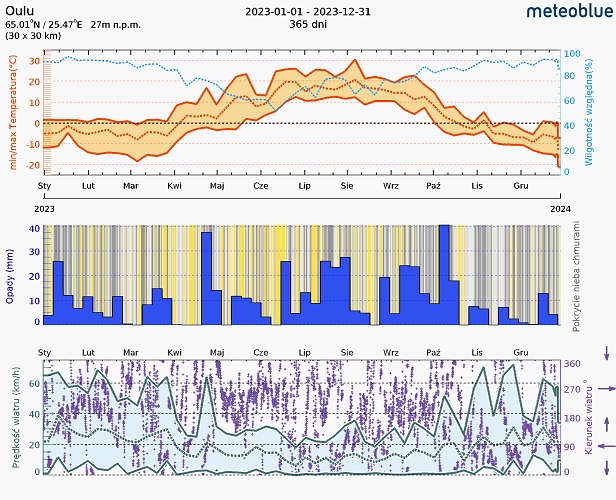
My clothing had to cover a temperature range from -5°C and upwards, including rainy conditions, which are quite common in Scandinavia. Additionally, even though I didn’t encounter freezing temperatures, I also packed my warmest clothing.
While planning my bicycle expedition Cycling to Nordkapp, I quickly realized that I wouldn’t be able to fit everything into my standard set of four bicycle panniers plus two transport bags. This doesn’t mean it’s impossible, of course. My style simply necessitates a greater amount of luggage, especially if I want to be as self-sufficient as possible during my journeys.
I explored the entire market of options and settled on a bicycle trailer. During this process, I considered both single-wheel and double-wheel trailers. Double-wheel trailers have an incredibly large capacity and can fit half of a household, but from my perspective, they come with disadvantages such as length, width, weight, and smaller wheels compared to the bicycle. This would restrict me from entering narrow places, and the non-standard wheels would require me to carry different tires and tubes.
Single-wheel platform trailers can also be quite heavy, sometimes weighing several kilograms, but they offer a relatively sufficient cargo area and are much narrower, allowing entry into more challenging locations. I chose the single wheel bike trailer Extrawheel bicycle trailer, which stands out due to its significantly lower weight compared to other designs. Additionally, it is not wider than the bicycle itself, and its load capacity comfortably accommodates two large panniers, which perfectly suited my needs.
Could I have opted for larger bicycle panniers and skipped the trailer? Theoretically, yes. In terms of volume, everything would match, as I could have purchased four 35-liter panniers for the bicycle plus two 35-liter transport bags and one 20-liter bag, totaling 195 liters, versus two 12.5-liter panniers, two 20-liter panniers, two 35-liter transport bags, and one 20-liter bag (120 liters) along with the Extrawheel trailer, depending on the model of bicycle bags, ranging from 40 liters to 100 liters in total.
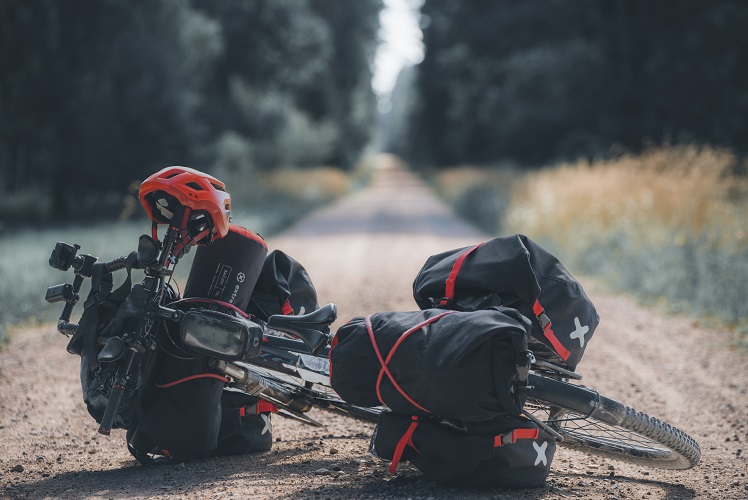
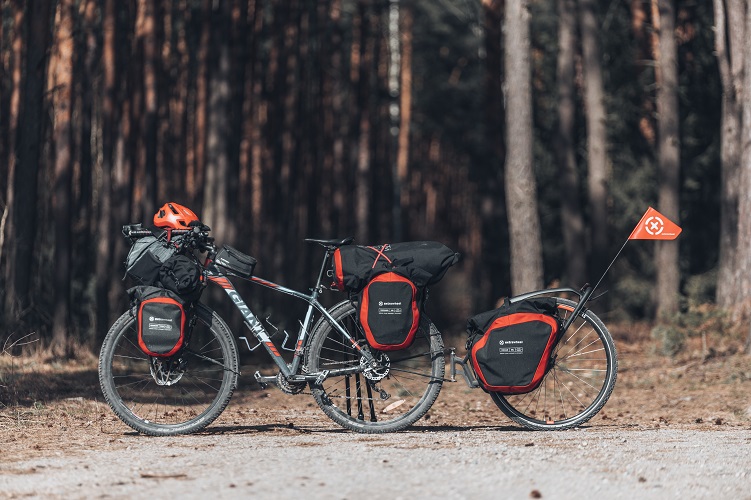
Unfortunately, my bicycle frame, which was absolutely not designed by the manufacturer for this type of touring, began to flex under the weight of such bicycle panniers. This made the ride uncomfortable and even dangerous. Initially, I considered the Voyager trailer for standard bicycle panniers, but I ended up with the Brave model, complete with two 35-liter panniers. Thanks to their design, these panniers hold their shape very well and provide ample storage capacity. They can even accommodate bulky items with ease. Additionally, the construction is lightweight, and the trailer wheel is the same size as the one on my bicycle. In case of any issues, I can use the same spare tube as on the bike.
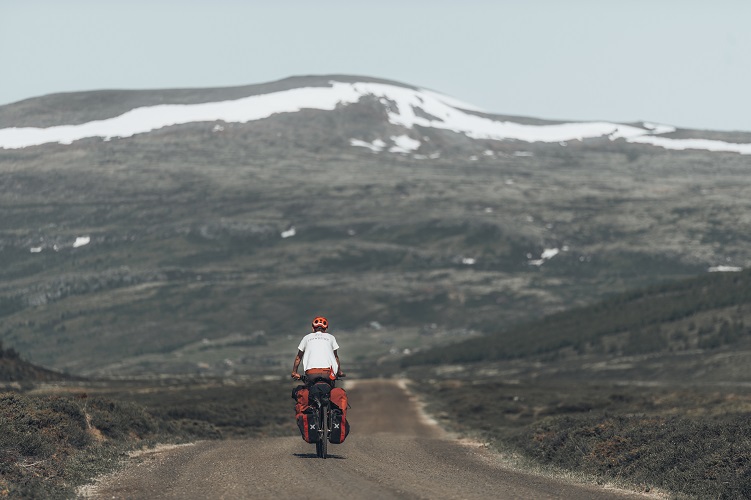
My observations regarding the bicycle trailer:
- During the ride, the trailer never disconnected, and I must admit I often checked it nervously, as I didn’t feel its presence while cycling.
- I did feel it after a full day of climbs or when going over higher obstacles like curbs. However, it was not in any way bothersome.
- The trailer can return its energy if you make sudden steering movements. Fortunately, such incidents on my part were rare.
- The manufacturer recommends not exceeding a speed of 35 km/h with the trailer. During relaxed riding, I often exceeded this suggested speed significantly, and it didn’t cause any issues as long as I wasn’t making abrupt, jerky maneuvers. Nevertheless, I don’t encourage or endorse this behavior.
- If the trailer is very heavy, and you brake very sharply, you might get the impression that it’s pushing the bike and affecting braking distance and overall handling. This mostly happens during emergency stops from 50 km/h to 0 in the shortest possible time. It resembles the situation when you’re braking a car with a trailer, and the trailer is proportionally heavy compared to the rest of the setup.
- The trailer tracks the rear wheel very well, and there are no issues with it catching on obstacles you pass by.
- Backing up requires some practice.
- I didn’t need any spare parts for the trailer.
After several thousand kilometers, I consider the Extrawheel bicycle trailer to have been a very wise choice. If I were to go on the same journey again, I would take it with me without hesitation. It’s an ideal solution for recreational cycling rather than racing, and it doesn’t put undue strain on your neck.
Nordkapp by Bicycle: Before and After the Trip – Practical Tips and Inspiration
You don’t need perfect language skills to travel. We’re well aware of how language learning is in Polish schools. My English, after more than a decade since graduating, is at Kali’s level, and a year before the trip, I diligently used language learning apps for over an hour each day. Unfortunately, grammar was always my Achilles’ heel. Eventually, I shifted my focus to vocabulary, and that was sufficient to prevent me from starving and living in filth. In the worst-case scenario, no one was going to shoot me just because I didn’t know the language, which almost everyone in Scandinavia speaks, starting from childhood. I usually informed my conversation partners at the beginning that my English was somewhat limited, and as a last resort, I used the Google Translate app on my phone, which almost everyone had as well. Typically, no one had an issue with this fact, and my conversation partners were smart enough to understand the basics of what I was trying to convey. It’s true that I missed out on some information because I couldn’t learn much from the people I met, but fortunately, interpersonal relationships weren’t my primary focus during the trip. Another thing to note is that every nation has its version of English. While we often joke about “Indian English,” this applies to other nations as well, and sometimes it was challenging to understand the same phrases. For example, it was only after naming neighboring countries that I realized my conversation partner was from Belgium, and he seemed somewhat offended, though it wasn’t my fault this time; I was speaking unusually unclearly.
Planning accommodations
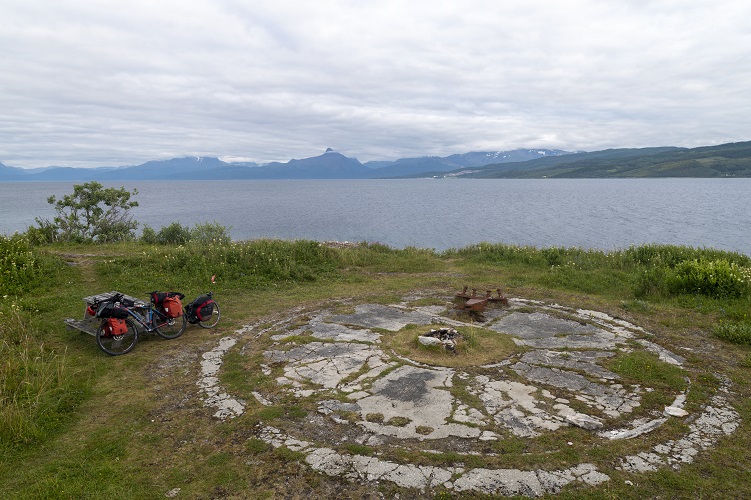
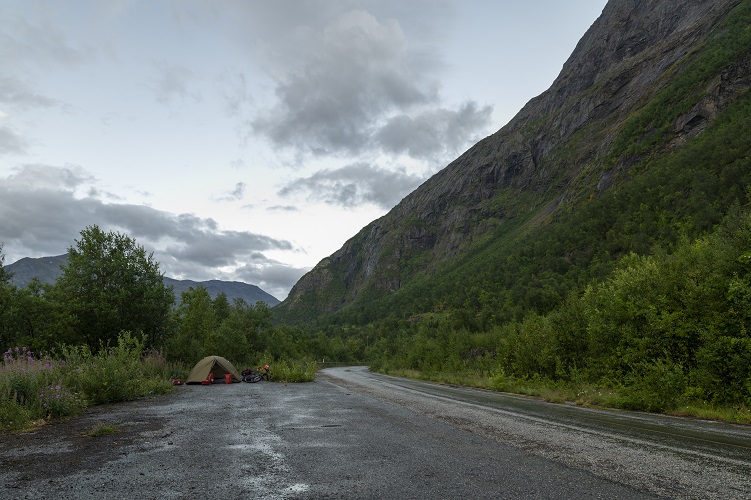
The matter looked twofold. During the planning stage at home, I selected places for overnight stays in the wild using Google Maps and Street View. On the road, if I deviated from the plan, I searched for accommodations in the same way but using my phone rather than a computer. Another thing to note is that sometimes accommodations happened by chance, as was the case in the Lofoten Islands when some Poles approached me and offered a place to stay. There were also times when I didn’t have internet access, which was rare compared to Poland, where I feel like there are many more areas without coverage, and in those situations, I simply looked around the area while cycling.
Other tools I used included maps:
- Budy Sweden
- And maps of Finnish cabins
Access to Finnish infrastructure is not always straightforward by bike, but thanks to these tools, I could plan quite a bit. In most cases in Sweden and Finland, there’s a place for lodging, making a campfire, and having fuel.
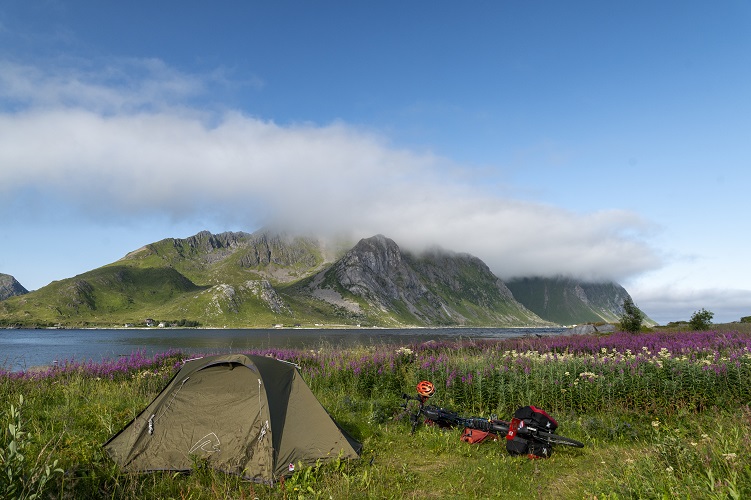

During my 152 days of travel, I spent 71 nights in a hammock and 52 nights in a tent.
For my bicycle trip Cycling to Nordkapp, I decided to bring both a hammock and a tent. Why? My philosophy was as follows: The tent would certainly be necessary at times because in many places, especially beyond the Arctic Circle, there wouldn’t be suitable attachment points for a hammock. So, the tent was already on my packing list. I also wanted to bring a tarp (a flat tarpaulin or “roof” for the hammock), which is very useful for creating a sheltered area during breaks or meals where there is no other cover available, and I wanted to shield myself from rain or wind.
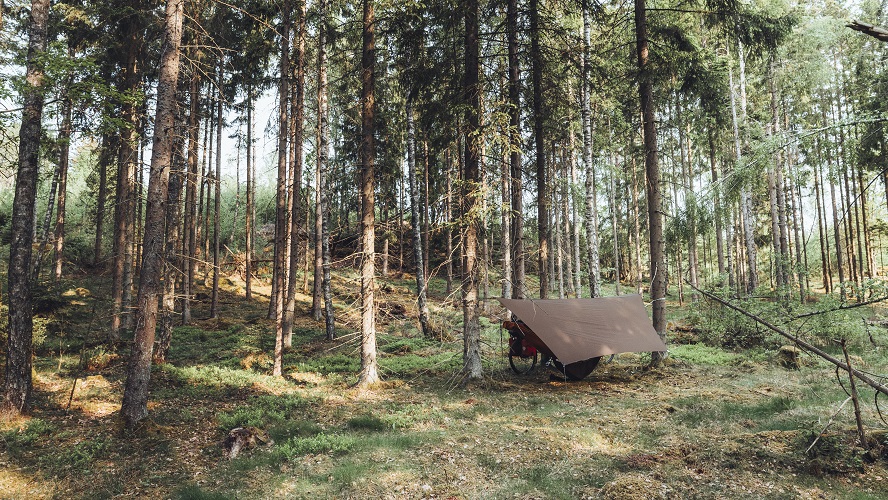
My tarp, the Lesovik Heksa, weighs just over 500g and takes up very little space. At this point, adding a hammock weighing 800g, considering all the gear and the capacity of my bags, doesn’t make a significant difference. Personally, I strongly prefer sleeping in a hammock over a tent. I find it more comfortable, and my spine appreciates it. Of course, it’s a matter of personal preference, and not everyone may like it, as both hammocks and tents have their limitations. I see them as two different forms of accommodation, each with distinct and complementary features. In a tent, I can set up on a flat piece of ground, while a hammock is independent of the ground beneath it.
If I had to choose only one for Cycling to Nordkapp, it would be the tent. However, for several years now, I’ve been traveling with a hammock in Poland, and I don’t plan on changing that. I choose the tools that are appropriate for the task at hand.
Cycling to Nordkapp by bike: How much does it cost?
It depends, and it’s not an evasive answer because it truly depends on various factors:
- How long is the journey (daily expenses multiplied by the duration of the trip)?
- What is your travel style?
- What type of bike do you have/buy?
- Do you service your bike yourself or send it to a workshop?
- The cost of maintaining your equipment.
- What kind of camping and bivouac gear do you have?
- Your daily food expenses.
- Do you visit and explore places along the way?
- Do you primarily wild camp or stay at campgrounds?
- What kind of photography and video equipment do you use?
- Costs related to your home during the trip (rent, utilities, gas, etc.).
- Insurance.
- Souvenirs and other expenses during the trip.
The most significant cost tends to be food. In my case, I spent an average of 96 PLN per day on food. However, I met a Czech traveler in Finland who successfully managed with 5-6 euros per day.
Here’s a breakdown of my expenses during the trip:
- Food: 14,528 PLN
- Attractions (museums, kayak, boat trips): 1,238 PLN
- Campgrounds and accommodations: 1,603 PLN
- Restaurants (e.g., McDonald’s, KFC): 243 PLN
- Souvenirs, magnets, hoodies: 4,074 PLN
- Other expenses*: 4,290 PLN
- Total from Revolut and PLN account: 25,976 PLN
*Other expenses include a tarp (which I lost), shorts, cartridges, jack-jack cables, headlamp, SSD drive (for storing photos and videos), derailleur cable, sending two packages to Poland, tire, camera remote, lens filter, glue/naphtha, ferry fares, etc.
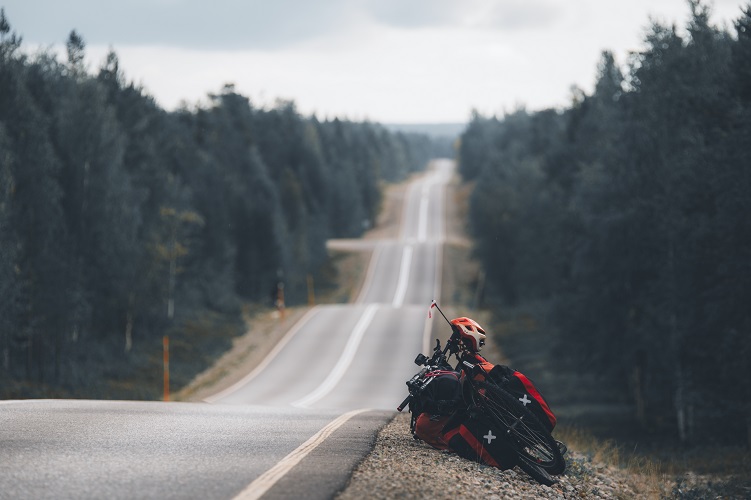
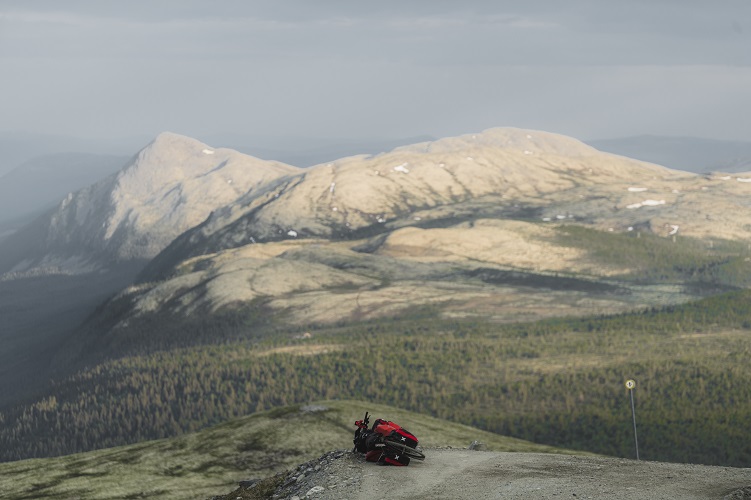
Summary of the Cycling to Nordkapp Bicycle Expedition: In Search of Northern Adventures
The bicycle expedition Cycling to Nordkapp was an unforgettable experience that will forever remain etched in my memory. It was a journey I embarked on with a mixture of excitement and uncertainty, but now that I’m back, I can honestly say it was the most incredible adventure of my life. I invite you to watch the trailer for the film about the bicycle expedition to Nordkapp.
With cycling greetings, Kamil – Blogger and Traveler [Link to Facebook profile: https://www.facebook.com/Okoloroweru]
